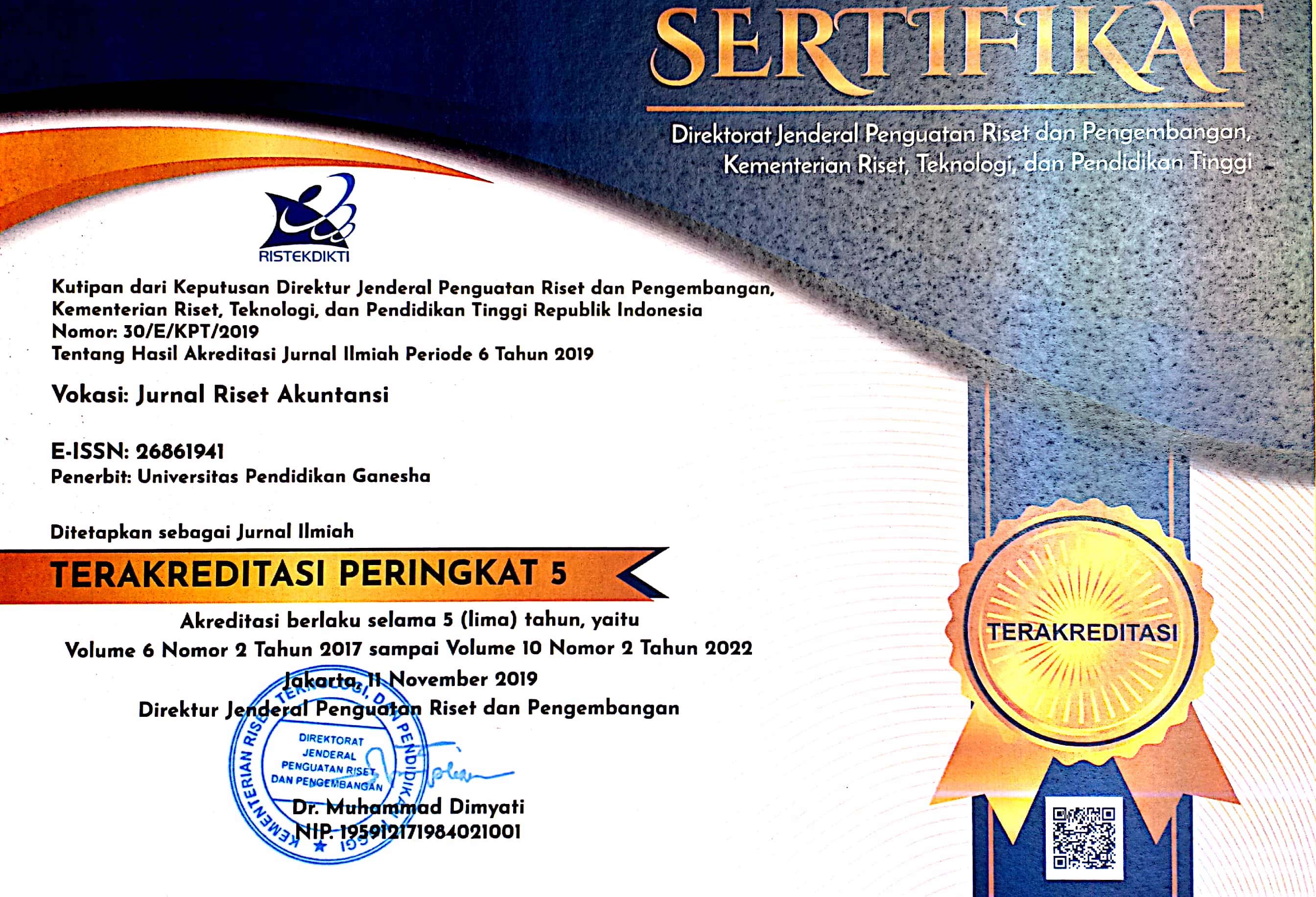Analisis Penerapan Laporan Keuangan Berdasarkan Standar Akuntansi Keuangan Entitas Mikro, Kecil dan Menengah (EMKM) pada Bank Sampah Galang Panji
DOI:
https://doi.org/10.23887/vjra.v12i3.67599Abstract
The research design can be interpreted as a setting strategy so that the researcher obtains valid data according to the variable characteristics and research objectives. The method used in this research is to use qualitative methods with descriptive methods. The research location is the place chosen to conduct a research. This research was conducted at the Galang Panji Garbage Bank, Panji village, Sukasada sub-district, Buleleng. The subjects in this study were the chairman of the Galang Panji Garbage Bank, Panji village, Sukasada sub-district, Buleleng, namely Gede Ganesha, and several waste bank administrators, namely the secretary and treasurer. Meanwhile, the object of this research is the Galang Panji waste bank, where financial reports have not been made in accordance with the EMKM SAK at the Galang Panji Garbage Bank, Panji village, Sukasada sub-district, Buleleng. The types and sources of data used in this study are primary data and secondary data. In this study the authors used two methods of data collection, namely using library research and field studies. The stages of data analysis in this study are in accordance with the qualitative data analysis model of Miles and Huberman as follows: Collecting data, Reducing data, Presenting data, and Drawing conclusions. This study found that the Galang Panji Garbage Bank had not made appropriate accounting records. with the Accounting Standards for Small and Medium Micro Enterprises (SAK EMKM) this is due to a lack of understanding regarding the preparation of financial reports in accordance with SAK-EMKM and time constraints. So that from these problems the preparation of financial reports based on SAK EMKM is a solution for the Galang Panji waste bank. The preparation of financial reports is carried out by using special journals in recording transactions to make it easier to record sales, purchase of waste, receipts and expenses so that they can be seen more clearly. Then proceed with recording transactions in a special journal, posting to a ledger, at the end of the period there is depreciation of fixed assets and adjustments to equipment so that it is recorded in a special journal and posted back to the ledger to facilitate the preparation of financial reports. financial statements.
Downloads
Published
Issue
Section
License

This work is licensed under a Creative Commons Attribution-NonCommercial-ShareAlike 4.0 International License.









